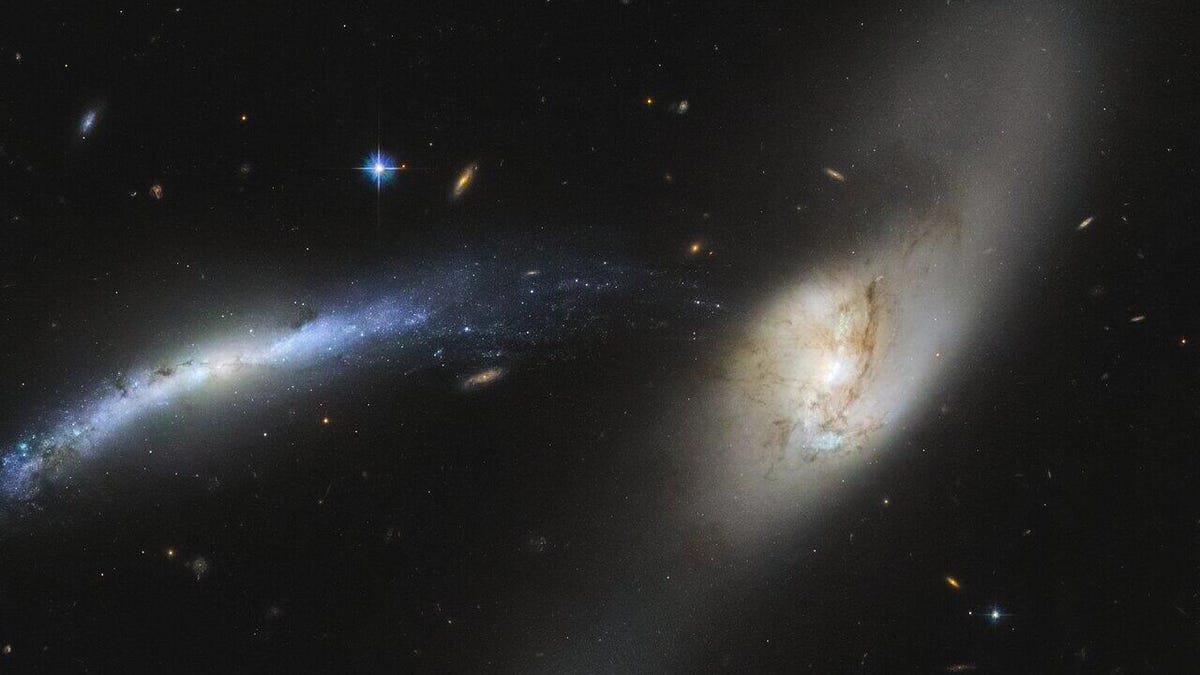Hubble spots wild cosmic 'waterspout' as two galaxies get cozy
I drink your (galactic) milkshake.
Galactic mergers are lengthy, involved processes that can take millions of years. The Hubble Space Telescope may have caught two galaxies in the preliminary stages of this epic cosmic tango.
The long thin-looking galaxy on the left in the Hubble image is NGC 2799 while the one on the right is its neighbor NGC 2798. The galaxies aren't merged yet, but they seem destined to get together.
"Already, these two galaxies have seemingly formed a sideways waterspout, with stars from NGC 2799 appearing to fall into NGC 2798 almost like drops of water," said the European Space Agency in a statement Monday. Hubble is a joint project from NASA and ESA.
Galactic mergers are more gentle than you might imagine. "While one might think the merger of two galaxies would be catastrophic for the stellar systems within, the sheer amount of space between stars means that stellar collisions are unlikely and stars typically drift past each other," ESA said.
The beauty of the new image brings to mind some of Hubble's many triumphs, like its view of "Godzilla galaxy" UGC 2885 or the space telescope's ethereal look at the Great Barred Spiral Galaxy. Even after 30 years in space, it's still able to wow us.


